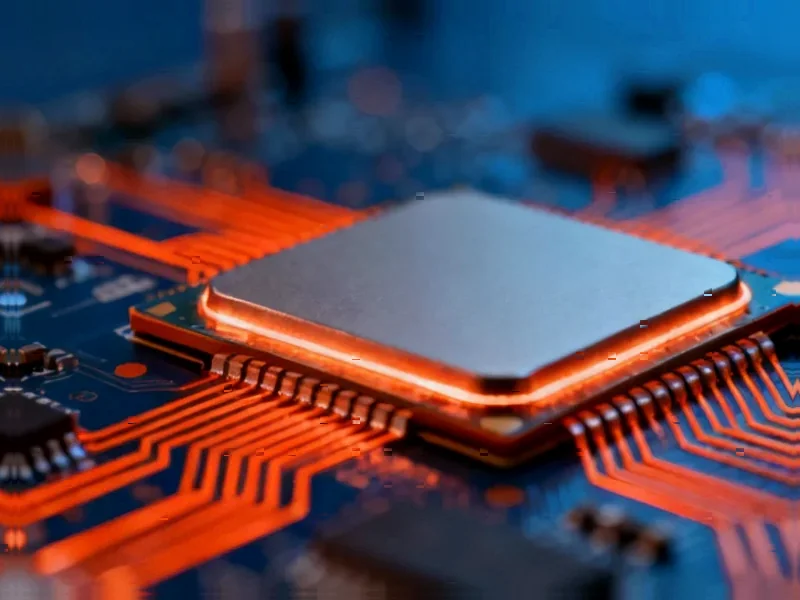According to DCD, power management company Eaton is acquiring Boyd Thermal from Goldman Sachs Asset Management for $9.5 billion in a deal expected to close in the second quarter of 2026. The acquisition brings Eaton Boyd’s extensive liquid cooling portfolio, including cold plates, cooling distribution units (CDUs), and immersion cooling systems specifically designed for high-density computing. Boyd Thermal has forecast $1.7 billion in sales for 2026, with $1.5 billion coming from liquid cooling solutions, and employs over 5,000 people across manufacturing sites in North America, Asia, and Europe. Eaton CEO Paulo Ruiz emphasized that combining Boyd’s liquid cooling technology with Eaton’s power management expertise will help customers manage increasing power demands more effectively, particularly in data centers. This massive acquisition signals a fundamental shift in how infrastructure providers are positioning themselves for the AI era.
The Great Infrastructure Consolidation
This acquisition represents the most significant consolidation play yet in the data center infrastructure space, creating a single provider capable of delivering integrated power and cooling solutions from chip to grid. For years, data center operators have struggled with managing separate vendors for power distribution, uninterruptible power supplies, and advanced cooling systems. Eaton’s move effectively creates a one-stop-shop for AI-ready infrastructure, potentially disrupting the traditional vendor ecosystem where companies like Vertiv, Stulz, and specialized cooling providers operated in separate domains. The $9.5 billion price tag—nearly six times Boyd’s projected 2026 revenue—demonstrates the premium Eaton places on capturing the entire AI infrastructure value chain rather than just the power component.
The AI Cooling Arms Race Intensifies
Boyd’s projection that 88% of its 2026 revenue ($1.5 billion of $1.7 billion) will come from liquid cooling underscores how rapidly the market is shifting toward advanced thermal management solutions. With AI chips from NVIDIA, AMD, and others pushing power densities beyond what air cooling can handle, the race to dominate liquid cooling has become existential for infrastructure providers. Boyd’s recent launch of a 2.3MW CDU capable of cooling more than ten Nvidia NVL72 racks positions Eaton to immediately capture the high-end AI server market. This acquisition leapfrogs Eaton past competitors who are still developing or acquiring liquid cooling capabilities, giving them a multi-year head start in a market that’s growing at breakneck speed.
Winners and Losers in the New Ecosystem
The competitive implications are profound. Traditional cooling specialists now face a competitor with massive scale, global manufacturing footprint, and existing relationships with every major hyperscaler and colocation provider. Companies like Iceotope and Green Revolution Cooling that focused exclusively on liquid cooling now compete against a behemoth that can bundle power and cooling in single contracts. Meanwhile, Eaton’s direct power management competitors like Schneider Electric and Vertiv must accelerate their own cooling strategies or risk losing ground in high-value AI infrastructure deals. For data center operators, this consolidation could mean simplified procurement but potentially less negotiating leverage as the number of full-stack providers shrinks.
Global Manufacturing Scale Matters
Boyd’s manufacturing footprint across three continents gives Eaton immediate global scale in thermal management production at a time when supply chain resilience has become critical. With AI data centers being built at unprecedented rates in North America, Asia, and Europe, having local manufacturing capabilities for both power and cooling components provides significant competitive advantage. This vertical integration allows Eaton to control quality, reduce lead times, and potentially offer more competitive pricing than competitors relying on third-party manufacturers. The combined entity’s 5,000+ thermal engineering and manufacturing employees represent a talent pool that would take years for competitors to replicate organically.
The Integrated Value Proposition
For enterprise and hyperscale customers, the combined offering addresses one of the biggest pain points in AI infrastructure deployment: the integration gap between power delivery and heat removal. Eaton can now provide single-vendor responsibility for the entire thermal and power chain, from the rack-level power distribution to the chip-level cold plates. This reduces integration risk, simplifies maintenance contracts, and potentially improves overall system efficiency through optimized control systems that manage both power and cooling in concert. As AI workloads become more dynamic, the ability to coordinate power management with cooling response in real-time could become a significant differentiator in total cost of ownership.
What Comes Next in Cooling M&A
This acquisition will likely trigger further consolidation as other power management companies seek thermal partners and cooling specialists look for protective mergers. The $9.5 billion valuation sets a high bar for future transactions and indicates that investors see massive growth potential in advanced cooling technologies. We can expect to see increased investment in two-phase cooling, direct-to-chip solutions, and immersion technologies as the entire industry races to keep pace with AI processor power demands that show no signs of slowing. The era of separate power and cooling vendors may be ending, replaced by integrated infrastructure providers capable of delivering complete solutions for the AI era.




